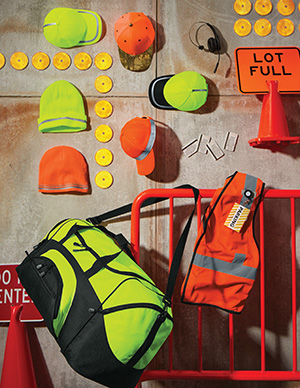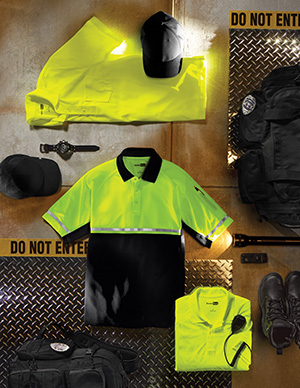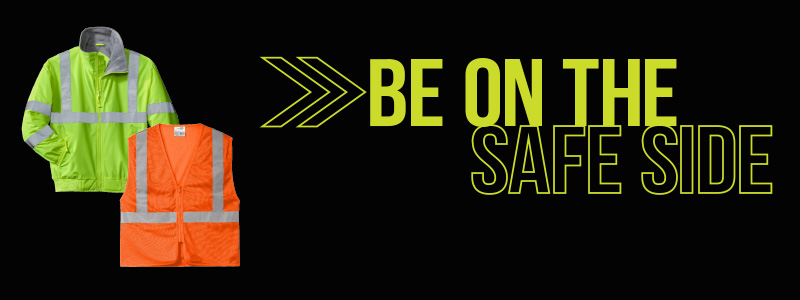In some jobs, being visible is one of the best ways to stay safe. For people who work in professions such as road construction, utilities, airport ground operations, traffic control, and emergency services, the importance of being clearly seen can’t be overstated. And that’s why, with National Safety Month coming up in June, it’s a great time to talk personal protection apparel.
But first, let’s take a step back and talk standards.
When it comes to standards, it’s important to have everyone on the same page. For example, unless everyone agrees that a mile is a mile and that most U.S. electric outlets will have 120 volts, life is going to be very confusing, even dangerous. This is why, back in 1918, five engineering organizations and three U.S. federal agencies formed the American Engineering Standards Committee to help set guidelines for industry. The first approved standard? The size of screw threading on pipes. In its early years, the organization, which later became the American National Standards Institute (ANSI), set national standards in mining, construction, and engineering, as well as for the eye and head protection for industrial workers.
 It was ANSI, in the 1960s, that determined that reflective tape was required for personal protection apparel. Seen workers, especially in high traffic areas, are safer. The ANSI standard has been updated multiple times, most recently in 2020.
It was ANSI, in the 1960s, that determined that reflective tape was required for personal protection apparel. Seen workers, especially in high traffic areas, are safer. The ANSI standard has been updated multiple times, most recently in 2020.
Known as ANSI/ISEA 107-2020, the American National Standard for High-Visibility Safety Apparel sets out guidelines for high-visibility shirts, rainwear, outerwear, and safety vests during day, low-light conditions, and at night. The ANSI guidelines are divided into three classes, because not all high-visibility clothing is the same. Class 1, the lowest category, might be worn by warehouse workers, parking attendants, and workers on sidewalk.
A step up, Class 2 might be used by roadway construction workers, survey crews, railway workers, as well as airport baggage handlers and ground crew. According to ANSI, Class 2 is required for those working in close proximity to traffic that is traveling more than 25 mph. Class 2 is also required when a high level of visibility is needed, wide ranges of weather conditions are present, and complex backgrounds are present.
As the highest class, Class 3 must meet the most rigorous requirements. Like Class 2, it is required for jobsites where a high level of visibility is needed, wide ranges of weather conditions are present, and complex backgrounds are present. In addition, ANSI 107 Class 3 is required for workers who have high task loads that often divert their attention, have significantly reduced sight distances, are exposed to significantly higher-speed traffic, and are clearly placed in danger. A worker wearing Class 3 must be conspicuous through a full range of body motions at a minimum of 1,280 feet and must be identifiable as a person. Workers who typically require Class 3 include roadway construction workers, survey crews, construction vehicle operators, railway workers, and flagging crews.
 To be honest, it can be a little confusing determining which ANSI-rated apparel is best for your customers, which is why two SanMar pros recommend that you don’t.
To be honest, it can be a little confusing determining which ANSI-rated apparel is best for your customers, which is why two SanMar pros recommend that you don’t.
Jeff Pont and Phil Osborn, Strategic Account Managers at SanMar, emphasize the importance of letting the end user determine what ANSI level they need when it comes to high-visibility apparel.
“It’s really the end user’s responsibility to determine the class of product they need,” explains Osborn.
“They need to tell you what they need, rather than you telling them what they should get,” agrees Pont.
Pont and Osborn explain that while they typically want their customer to be the expert and give recommendations, that personal protection apparel is the one category where they don’t suggest that. In the case of personal protection, the end user or, preferably, a safety manager working for the end user, needs to determine what ANSI-rated apparel their team requires.
In the end, when it comes to high-visibility apparel, your best choice is always to be safe. Explore our high-visibility product guide to get started.
